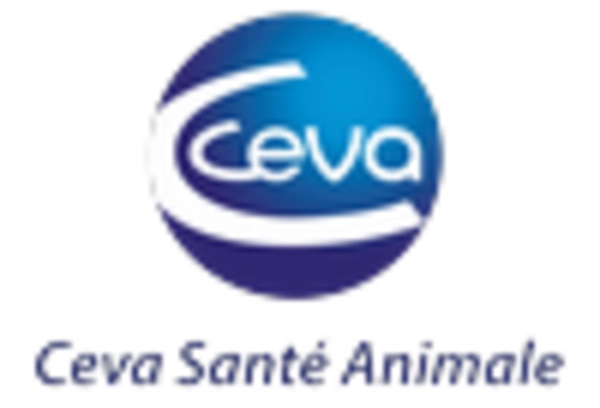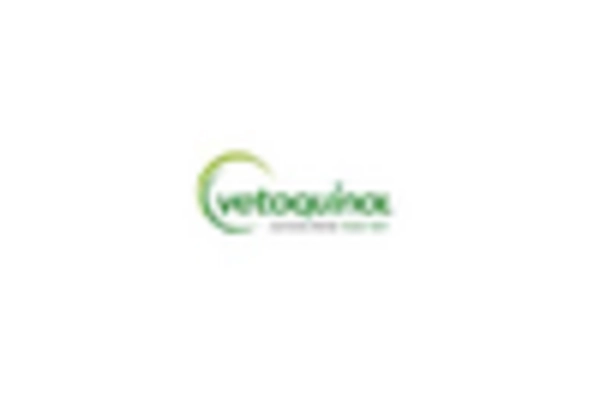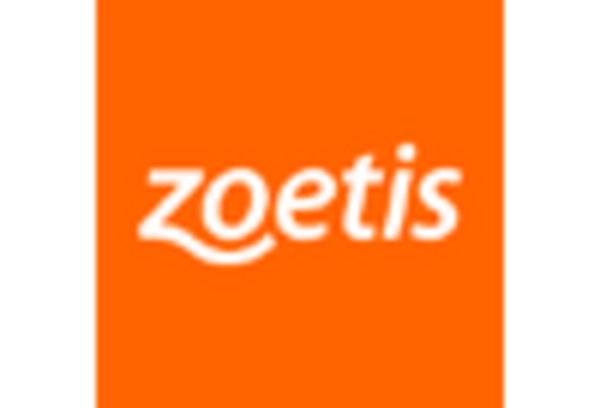Government Support and Funding
Government support plays a pivotal role in the avian influenza-vaccine market, particularly in the GCC region. Authorities are increasingly recognizing the importance of vaccination programs to mitigate the risks associated with avian influenza. Financial backing for research and development initiatives is on the rise, with budgets allocated for vaccine production and distribution. For instance, recent allocations have reached up to $50 million for avian influenza control measures. This funding not only aids in the development of new vaccines but also enhances existing ones, ensuring they meet the evolving strains of the virus. Consequently, the avian influenza-vaccine market is likely to benefit from sustained government involvement and investment.
Rising Avian Influenza Incidence
The avian influenza-vaccine market is experiencing growth due to the increasing incidence of avian influenza outbreaks in poultry across the region. Reports indicate that the GCC has faced several outbreaks in recent years, leading to heightened awareness among poultry farmers and consumers regarding the disease's impact on food security. This situation has prompted governments and private sectors to invest in vaccine development and distribution. The avian influenza-vaccine market is projected to expand as vaccination becomes a critical component of disease management strategies. The GCC's poultry industry, valued at approximately $1.5 billion, is likely to drive demand for effective vaccines, ensuring the health of livestock and the safety of food supplies.
International Trade Regulations and Compliance
International trade regulations are increasingly impacting the avian influenza-vaccine market in the GCC. Compliance with The avian influenza-vaccine market access and trade. The GCC countries are aligning their regulations with international guidelines to facilitate the import and export of vaccines. This alignment not only ensures that vaccines meet safety standards but also enhances consumer confidence in poultry products. As trade barriers are reduced, the avian influenza-vaccine market is likely to benefit from increased access to innovative vaccines from international suppliers. This dynamic could lead to a more competitive market landscape, ultimately benefiting poultry producers and consumers alike.
Technological Innovations in Vaccine Development
Technological innovations are reshaping the avian influenza-vaccine market, particularly in the GCC. Advances in biotechnology and vaccine formulation are enabling the development of more effective and safer vaccines. Techniques such as recombinant DNA technology and mRNA vaccine platforms are being explored to enhance vaccine efficacy. These innovations not only improve the immune response in poultry but also reduce the time required for vaccine production. As a result, the avian influenza-vaccine market is likely to see an influx of new products that can address emerging strains of the virus. The potential for these technologies to revolutionize vaccine development may lead to increased market competitiveness and improved disease management strategies.
Consumer Awareness and Demand for Safe Poultry Products
Consumer awareness regarding food safety is significantly influencing the avian influenza-vaccine market. As consumers become more informed about the risks associated with avian influenza, there is a growing demand for safe poultry products. This trend is particularly evident in the GCC, where consumers are increasingly concerned about the health implications of consuming poultry that may be affected by the virus. The avian influenza-vaccine market is responding to this demand by ensuring that vaccines are readily available to poultry producers, thereby enhancing the overall safety of poultry products. Market analysts suggest that this heightened consumer awareness could lead to a potential increase in vaccine uptake, further driving market growth.

















Leave a Comment